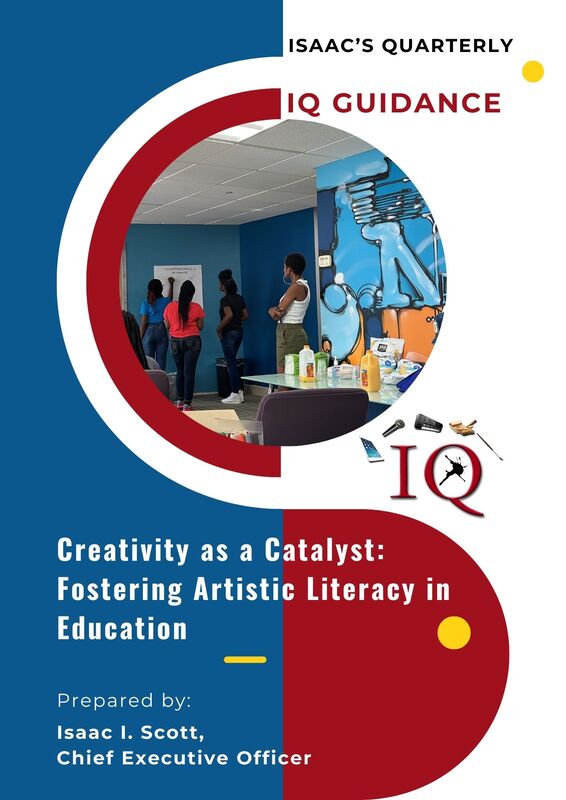|
Creativity as a Catalyst - Fostering Artistic Literacy in Education
Introduction In the realm of education, fostering artistic literacy serves as a catalyst for empowering students, enhancing educational outcomes, and nurturing creativity. This white paper, designed for students, educators, and researchers, explores the profound impact of artistic literacy on education. By providing practical strategies for integrating art into the curriculum, this resource aims to inspire creativity and self-expression among students. The Role of Artistic Literacy in Education Artistic literacy goes beyond traditional forms of literacy, offering students a unique avenue for self-expression and cognitive development. The National Art Education Association emphasizes the importance of artistic literacy in fostering critical thinking and communication skills (National Art Education Association, 2021). Integrating art into education enhances the overall learning experience. Practical Strategies for Integrating Art into Curriculum 1. Interdisciplinary Approaches: Explore the integration of art across various subjects, fostering interdisciplinary connections. The Journal of Educational Psychology discusses the positive impact of interdisciplinary approaches on student engagement and learning outcomes (Journal of Educational Psychology, 2019). 2. Project-Based Learning: Implement project-based learning initiatives that encourage creativity and collaborative problem-solving. The Buck Institute for Education provides resources on effective project-based learning strategies (Buck Institute for Education, 2020). 3. Cultivating a Creative Environment: Create a classroom environment that encourages creative expression and experimentation. The Harvard Graduate School of Education offers insights into fostering creativity in educational settings (Harvard Graduate School of Education, 2018). Case Studies: Successful Implementation of Artistic Literacy in Education 1. The Reggio Emilia Approach: Explored by the Journal of Early Childhood Research & Practice, the Reggio Emilia Approach integrates art into early childhood education, fostering creativity and self-directed learning (Journal of Early Childhood Research & Practice, 2021). 2. The STEAM Education Model: Featured in the International Journal of Science Education, the STEAM (Science, Technology, Engineering, Arts, and Mathematics) education model demonstrates the positive impact of integrating arts into STEM subjects (International Journal of Science Education, 2017). Resources for Students, Educators, and Researchers 1. National Art Education Association - Artistic Literacy Resources: Access resources and insights on the importance of artistic literacy in education (National Art Education Association, 2021). 2. Journal of Educational Psychology - Interdisciplinary Approaches: Research on the positive impact of interdisciplinary approaches on student engagement and learning outcomes (Journal of Educational Psychology, 2019). 3.Buck Institute for Education - Project-Based Learning Resources: Practical resources for implementing effective project-based learning strategies (Buck Institute for Education, 2020). 4. Harvard Graduate School of Education - Fostering Creativity: Insights into creating a classroom environment that fosters creativity in educational settings (Harvard Graduate School of Education, 2018). Conclusion: Nurturing Creativity through Artistic Literacy Artistic literacy stands as a cornerstone for nurturing creativity, critical thinking, and self-expression in education. By implementing practical strategies and drawing inspiration from successful case studies, students, educators, and researchers can collectively contribute to a more dynamic and enriching educational experience. References Buck Institute for Education. (2020). Project-based learning resources. Harvard Graduate School of Education. (2020). Understanding Creativity. International Journal of Science Education. (2017). The impact of the STEAM education model. Journal of Early Childhood Research & Practice. (2021). The Reggio Emilia Approach: Integrating art into early childhood education. Journal of Educational Psychology. (2019). Interdisciplinary approaches in education. National Art Education Association. (2021). Artistic literacy resources. The information provided herein has been compiled based on Isaac Scott's 10 years of art and criminal legal advocacy. While efforts have been made to ensure accuracy, some references from online sources may be unpublished, and certain materials may require subscriptions for full access. Users are encouraged to use the provided references as a starting point and are further encouraged to conduct independent research to verify and expand upon the topics presented. The content is for informational purposes only and should not be construed as legal advice. Readers should consult with qualified professionals for advice on specific legal matters.
0 Comments
Leave a Reply. |

CHIEF EDITOR
ISAAC I. SCOTT,
Five-time Change Agent Award winner, Multimedia Visual Artist, Journalist, and Independent Consultant. Categories
All
Archives |
|
© 2020 Isaac's Quarterly LLC. The images, pictures, and videos on this website are copyrighted and may not be downloaded or reproduced. These materials may be used only for Educational Purposes. They include extracts of copyright works copied under copyright licences. You may not copy or distribute any part of this material to any other person. Where the material is provided to you in electronic format you may download or print from it for your own use, but not for redistribution. You may not download or make a further copy for any other purpose. Failure to comply with the terms of this warning may expose you to legal action for copyright infringement and/or disciplinary action by Isaac's Quarterly LLC.
|
|
|
Follow Isaac's Quarterly on Social Media
|

 RSS Feed
RSS Feed
